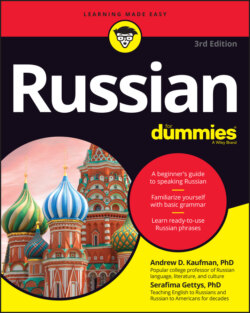Читать книгу Russian For Dummies - Serafima Gettys - Страница 50
The hard sign
ОглавлениеThe hard sign is represented by the letter ъ. Whereas the soft sign makes the preceding consonant sound soft (see the preceding section), the hard sign makes it — yes, you guessed it — hard. The good news is that this letter (which is transcribed as a double quotation mark [”]) is rarely used in contemporary Russian, and even when it is, it doesn’t really change the pronunciation of the word. So why does Russian have this sign? For two purposes:
To harden the preceding consonant
To retain the hardness of the consonant before the vowels Ee, Ёё, Юю, and Яя
Without the hard sign, these consonants normally would soften. When a hard sign (ъ) separates a consonant and one of these vowels, the consonant is pronounced without softening, as in the word пoдъeзд (pahd-yehzd) (porch).
Don’t worry too much about this one if your native language is English. Native speakers of English rarely tend to soften their Russian consonants the way Russians do it. In other words, if you’re a native English speaker, and you come across the situation described here, you’ll probably make your consonant hard, pronouncing it correctly by default!
FUN & GAMES
Match the Russian letters in the first column with the sounds they correspond to in the second column. You can find the answers in Appendix C.
1 H | a. r |
2 P | b. n |
3 Г | c. ee |
4 Я | d. ya |
5 И | e. g |
